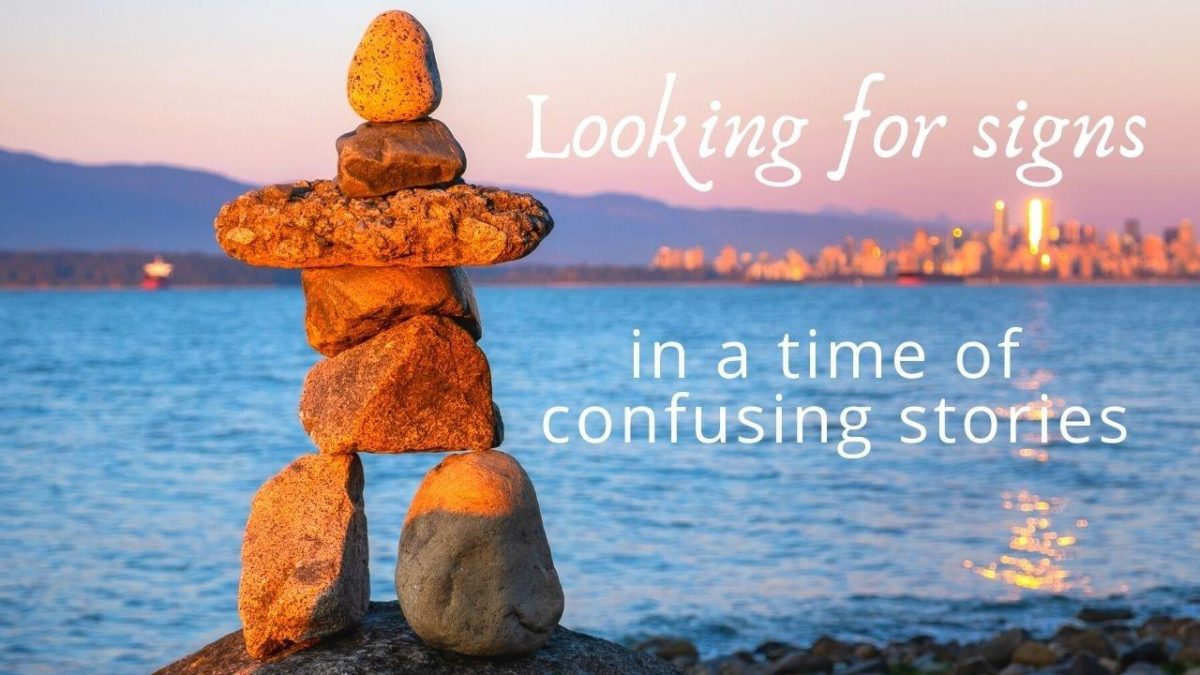
First Published on Apr 19, 2020 on https://www.getsoaring.com/blog/ . Republished here with permission and gratitude to Mary Alice Arthur @ SOAR
In these greatly challenging days, I have the sense that we are building a new kind of collective wisdom, one that for the moment remains mysterious. New communities are springing up around invitations to think together about issues or be in practice, or listen to new ways of looking at the world. Although we are in the time of “social distancing”, the space between us is somehow growing smaller.
There is a tension between that sense of speeding up to try and keep the world working, and slowing down to reflect on what might be possible now, both individually and collectively.
We know with even more certainty now that the old stories are no longer serving, but what comes next?
This week I’ve had the pleasure to be in conversation with a group of narrative practitioners I really value — Madelyn Blair, David Hutchens, Annette Simmons and David Drake. Together we make the most interesting weaving of thought around narrative practice. It was good to sit around the fire together and talk about this moment.
Our conversation about what comes now — now in the time of confusion, concern and challenge, where competing narratives are everywhere — was rich and complex. Here are five points that stood out for me:
It’s the end of the hero’s journey
Western society has created a myopia on the monomyth of the hero journeying through challenge to success. Its original cycle had depth in the support the hero received from a cadre of significant other figures and always the boon was brought back to the benefit of the wider community. But as the focus on individualism has strengthened, so too has the focus on individuals within the story. Indigenous cultures have a focus on community stories and a strong tie back to nature. As Thaler Pekar points out in her blogpost, we can learn some good lessons from Black Panther about the leader representing the land itself and the role community plays in success. It is time to move away from the monomyth and into more collective story forms. What are they?
Stop making sense!
It has so often been said that we humans are creatures who crave meaning and that’s why we need stories. We want to make sense of the world and our place in it. Right now there is an overwhelming drive to “get back to normal”, to make sense of what is happening and move swiftly to problem solving. The more we move into the hormones of stress, the more the brain moves into survival and reductionist thinking, focusing on the worst possible outcome. This leads to black and white stories. What if we stopped making sense? What if we listened instead to what this age is asking from us?
In a very real sense this moment has been the offering of a giant RESET button. Following the concept of “de-centralising self”, that is, taking yourself out of the middle of the story (or the center of the universe!) for a moment and deeply listening into life, what could we learn?
This is Theory U‘s “let go to let come”, an opportunity to let go the mooring, to float on the waters, to see how the pieces might be asking to rearrange themselves before snapping back to “new normal”. We can sense a new story wanting to arise. Are we willing to let it come?
What narratives are we nurturing?
There are many competing narratives at work in the world right now. We’ve used the war metaphor so much in the past that it feels normal. “We are at war with this intruder”, “we will beat this thing”, “our healthcare practitioners are the first line of defense” — these are words many of our male leaders are using right now. “We are in this together”, “let’s all do something for community well-being”, “let’s take care of each other” are words that many of our female leaders are using. As Annette Simmons reminded us,
Research on how people respond to threat found that women most often tackle challenges by finding friends and operating from a wider support base. It’s worth taking a closer look at this strategy now.
Connecting in community will make us more resilient and lead to a different unfolding story. The stories we tell ourselves and each MATTER.
Are we facing our own shadow?
This moment in history is forcing us to take a closer look — at ourselves, at our society and at the actions of humanity as a whole. In one way it seems the Corona Virus is actually our shadow made manifest. When confined to our homes and staying inside we get a closer look at behaviours we don’t like. We are faced with how we try to numb ourselves or avoid stillness and self-reflection. We see how we take our frustrations out on others and emotions are amplified. In the public sphere we are hearing more and more often: “This isn’t who we are!”, but it IS a demonstration of one of the aspects of who we are. As the ME voice shouts louder, what happens to WE? The bigger question is: what are we prepared to do about it?
From a story point of view, are we willing to look at our predominant narratives and see them for what they are? How do we advocate for all narratives to have a place?
Leaving signs for each other
We are at the point of weaving a future we can’t imagine. What does it mean to rise to this occasion and consciously move into what we can’t clearly see? In Medieval times, old maps used to depict the edge of world as a dangerous, “here be dragons!”, place. We were afraid of the edge of the known world for two good reasons. If you went there, you might never come back. And if you did come back, you would be changed forever. Far easier to stay at home. Even if you didn’t like it, at least it was familiar.
These are the times to pay attention to those who go to the edge of the known world. It is time for those of us exploring to leave signs for others.
The Inuit know this well, as Inukshuks are part of their culture. In the Arctic, where there are few landmarks to navigate by, the people leave each other signs to point out places where food and water can be found, where it is good to camp. These figures are greatly respected and honoured as friends. In fact Inukshuk means in the shape of a human. How can we leave each other signs of where we can be better humans together? Not only for ourselves, but for the well-being of the planet?
In this time of outer identities being stripped away, it is time to turn to reflect on your stories. The narratives you nurture matter even more now.
——-
